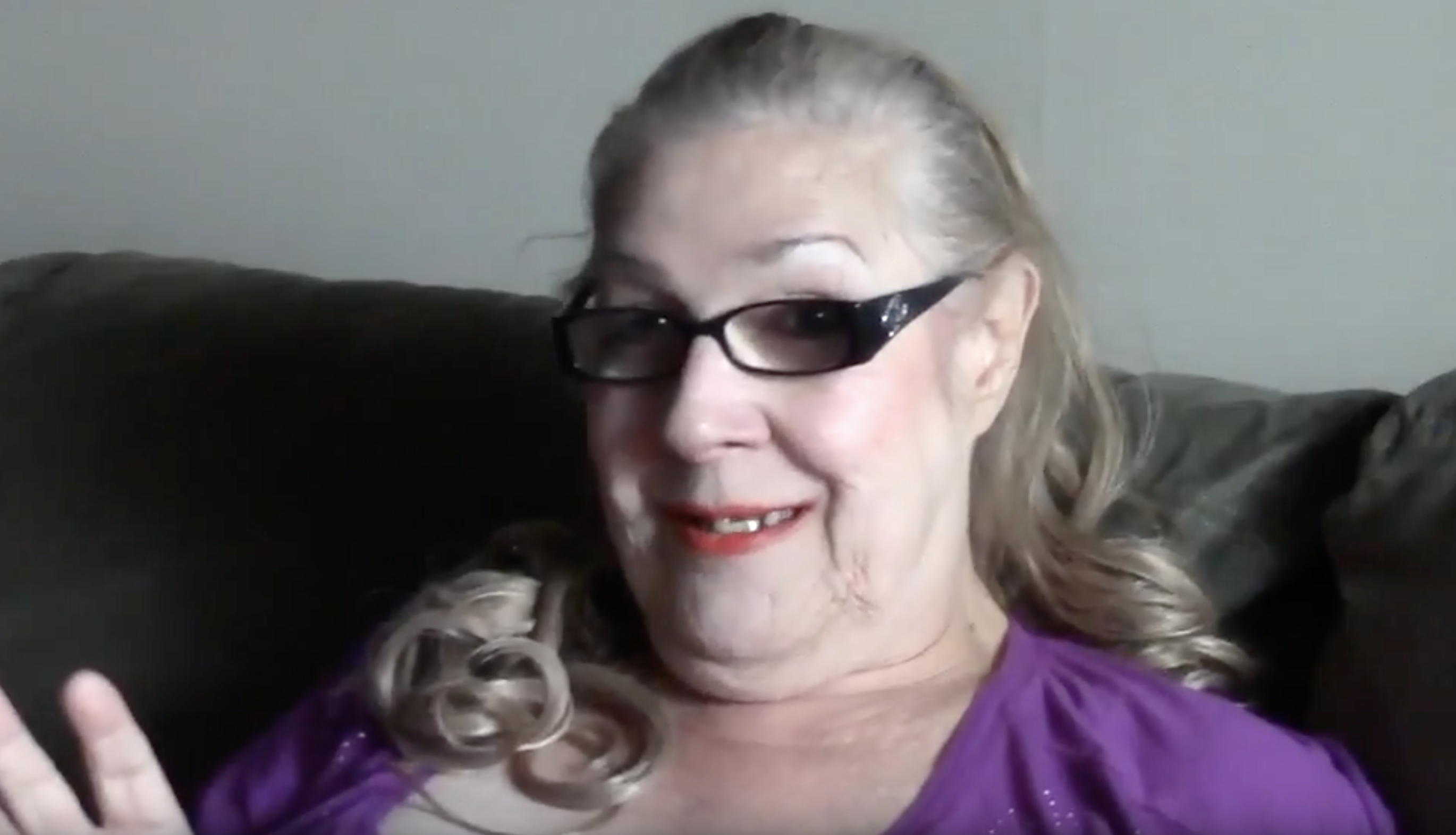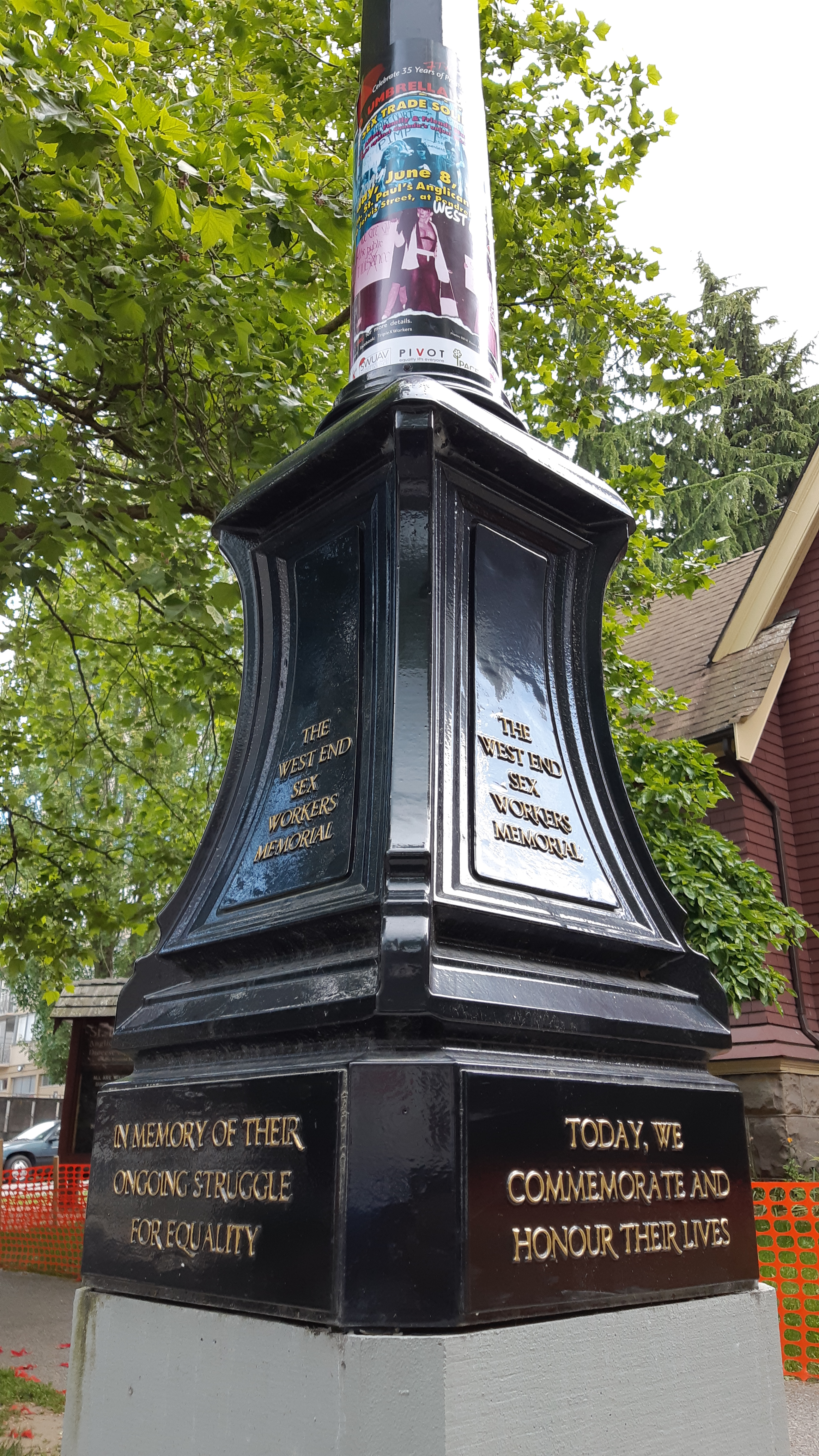
Jamie Lee Hamilton (1955 – 2019) was a trans, Two-Spirit, Indigenous woman, and organizer who fiercely advocated against the past and ongoing criminalization of sex work in Canada. Her work propelled people to notice and think critically about anti-sex work sentiment, and liberal discourses that frame sex workers as victims in need of rescue, rather than as empowered organizers who worked together across multiple issues to resist the erasure of vital histories of sex work in Canada, as well as the violence that such erasure makes possible. Drawing on sex worker activism throughout the 70s-80s—what Hamilton referred to as the “golden age of sex work in Vancouver”—Hamilton’s interview with the AAHP documents powerful histories of organizing across multiple issues, and underscores the importance of resisting isolation and erasure through collective action and intergenerational remembrance practices (T48/3).
Hamilton’s activism demonstrated the radical potential of organizing across multiple issues for change-making. Her interview documents many moments in which sex workers in Vancouver came together and worked collectively to resist their attempted erasure by civil society organizations such as Concerned Residents of the West End, and by various levels of government through legislation such as the city’s Street Activities By-Law, and the province’s 1984 injunction against sex workers. Amidst this context of anti-sex

work sentiment, and the violence it made possible, Hamilton highlighted the formation of sex worker-led organizations that were directed towards their empowerment and safety, such as the Alliance for the Safety of Prostitutes, the Women’s Information Safe House, and Prostitutes and Other Women for Equal Rights. Amongst many other initiatives, Hamilton helped create various harm reduction strategies for sex workers, such as creating some of the first “bad date sheets”, through which sex workers protected each other by documenting the license plates, vehicle descriptions, and physical descriptions of dangerous clients (T48/7). She also organized a “shoe dump” action at City Hall. Recognizing that many of the sex workers missing were Indigenous, Hamilton reached out to the United Native Nations to join in the dumping of 67 pairs of shoes at City Hall—one pair for each of 67 sex workers noted to be missing at the time (T48/12). In doing so, Hamilton demonstrated that the protection of sex workers required an ongoing commitment to the dismantling of settler colonialism.
Hamilton’s fierce advocacy for organizing across multiple issues shone through in her involvement with AIDS organizing. In response to British Columbia’s 1980s quarantine legislation, sex workers and drag queens came together with lesbians, bisexuals, gay men and others to fight it by forming the Coalition for Responsible Health Legislation, visiting the city’s fourteen gay bars on weekends to do awareness campaigns, mobilize, and to fundraise. Observing that, initially, it was predominantly gay men who were getting sick, Hamilton remembered thinking that “This isn’t right that they can be locked up and quarantined”, and noted that upon remembering sex worker’s “own battle,” having felt “this amazing connection of solidarity” (T48/8). Hamilton recalled thinking, “Like, we’re not going to allow our brothers, and then later women as well, to be treated in this manner. Because we remembered how we were treated, as well” (T48/8).
As a community mobilizer and organizer, Hamilton remained cognizant of the violent impacts of isolation on those for whom mainstream community organizing was inaccessible and unaccountable. In particular, Hamilton’s interview problematized the isolation of trans AIDS patients in Normandy Hospital, away from the broader LGBTQ community, which she observed was a key factor in their mistreatment. Hamilton recalled that
“Then at one point our trans community were – and I don’t know why this happened – they were being placed at, you know if they had AIDS, they were being placed at this private hospital way out in the West side on Arbutus Street called the Normandy Hospital. And it was awful … you know, I’d visit a friend or two in there, and it was just very alien for them, you know.” (T48/9)
She explained further that,
“Still to this day I don’t understand why. I realize there wasn’t much, but we could have worked together, put our heads together. And why Normandy Private Hospital was chosen as a rest home? It didn’t make sense. It was way out of the downtown core where our community is.” (T48/9)
In response to the isolation of members of the trans community, and the mistreatment and violence they were consequently subjected to away from the public eye, Hamilton began raising “awareness around trans issues and AIDS…,” simultaneously educating trans people on the use of condoms, while fighting their isolation by ensuring their inclusion in broader 2SLGBTQ AIDS organizing (T48/9). Her interview reflected her ongoing commitment to fighting isolation, ensuring that those sent to Normandy Hospital were included in the process of documenting AIDS activist histories.
Hamilton’s work against the isolation of trans AIDS patients was part of her broader commitment to resisting erasure, systemically as well as at the level of the everyday. She emphasized the importance of intergenerational dialogue and coalitions, underscoring the need for subsequent generations of activists to learn from and build on the work and strengths of their predecessors, stating that “I think you need to respect the elders, and learn from the elders” (T48/18). Hamilton’s resistance to erasure was driven by her deep commitment to maintaining active communities that are ready and mobilized to respond to new and ongoing attempts at all levels of systemic erasure, explaining that “at any time things can change, policies can change. We could have another quarantine legislation. We could be threatened with it. You just never know who the lawmakers are going to be… [sigh]” (T48/18). The urgent task for future generations is to learn from our predecessors—not solely to acquire the skills and tools needed to do anti-oppressive work, but also to learn to think collectively across multiple issues and generations in doing so.
Jamie Lee Hamilton was a vital force in building the sense of collectivity needed to resist so many attempts at the erasure of sex workers, Indigenous peoples, trans people, and broader 2SLGBTQ communities. Towards the end of her interview, Hamilton expressed that “We’ve lost so much of all that history. In a way, I’m happy that I got to be around it in the heyday. I just don’t want to see complete erasure” (T48/19). It is not possible to fully commemorate Hamilton in writing alone. What is possible, however, is her commemoration through action—that is, by learning from the wealth of knowledge she generously gave in words and in action, and using it to build and nurture the “connections of solidarity” that drive and sustain us (T48/8). Rest in power, Jamie Lee Hamilton.